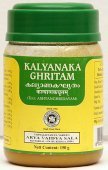Padima, Paḍima, Padimā: 2 definitions
Introduction:
Padima means something in Jainism, Prakrit. If you want to know the exact meaning, history, etymology or English translation of this term then check out the descriptions on this page. Add your comment or reference to a book if you want to contribute to this summary article.
In Jainism
General definition (in Jainism)
Source: archive.org: Aspects of Jaina Art and ArchitecturePadimā (पदिमा) refers to “images” (of human beings), according to the Bṛhatkalpabhāṣya (Vol IV., gāthā 4915): a 6th century commentary on monastic discipline authored by Svetambara Jain exegete Saṅghadāsa.—Images of Tīrthaṃkaras were made of stones, metals, wood, clay, precious gems, jewels or semi-precious stones. The Jaina Bṛhatkalpa-bhāṣya refers to a mechanical image (janta-padimā) of a human being which could walk and open and shut its eyes. It is further said that m the Yavana country such images were turned out m large numbers Some of these may have been of wood with some metallic contrivances inside but others may have been of metal.
Padimā in Prakrit is known in Sanskrit as Pratimā.

Jainism is an Indian religion of Dharma whose doctrine revolves around harmlessness (ahimsa) towards every living being. The two major branches (Digambara and Svetambara) of Jainism stimulate self-control (or, shramana, ‘self-reliance’) and spiritual development through a path of peace for the soul to progess to the ultimate goal.
Languages of India and abroad
Prakrit-English dictionary
Source: DDSA: Paia-sadda-mahannavo; a comprehensive Prakrit Hindi dictionary1) Paḍima (पडिम) in the Prakrit language is related to the Sanskrit word: Pratima.
2) Paḍimā (पडिमा) also relates to the Sanskrit word: Pratimā.
Prakrit is an ancient language closely associated with both Pali and Sanskrit. Jain literature is often composed in this language or sub-dialects, such as the Agamas and their commentaries which are written in Ardhamagadhi and Maharashtri Prakrit. The earliest extant texts can be dated to as early as the 4th century BCE although core portions might be older.
See also (Relevant definitions)
Starts with: Padimaddu, Padimalakkhana, Padimalla, Padimamta, Padimana, Padimana, Padimata, Padimatheya, Padimatteya, Padimatu, Patimai, Patimakan, Patimam, Patimanam, Patimarram, Patimatalam, Patimattal, Patimaviratam, Patimavunti, Patimetai.
Ends with: Appadima, Jantapadima, Khamdhapadima.
Full-text: Pratima, Patimaviratam, Pratimalakshana, Patimai, Bimba, Padimalakkhana, Janta, Patimam, Pativam.
Relevant text
Search found 1 books and stories containing Padima, Paḍimā, Paḍima, Padimā; (plurals include: Padimas, Paḍimās, Paḍimas, Padimās). You can also click to the full overview containing English textual excerpts. Below are direct links for the most relevant articles:
A Cheerless Wedding < [September 1937]
Related products
